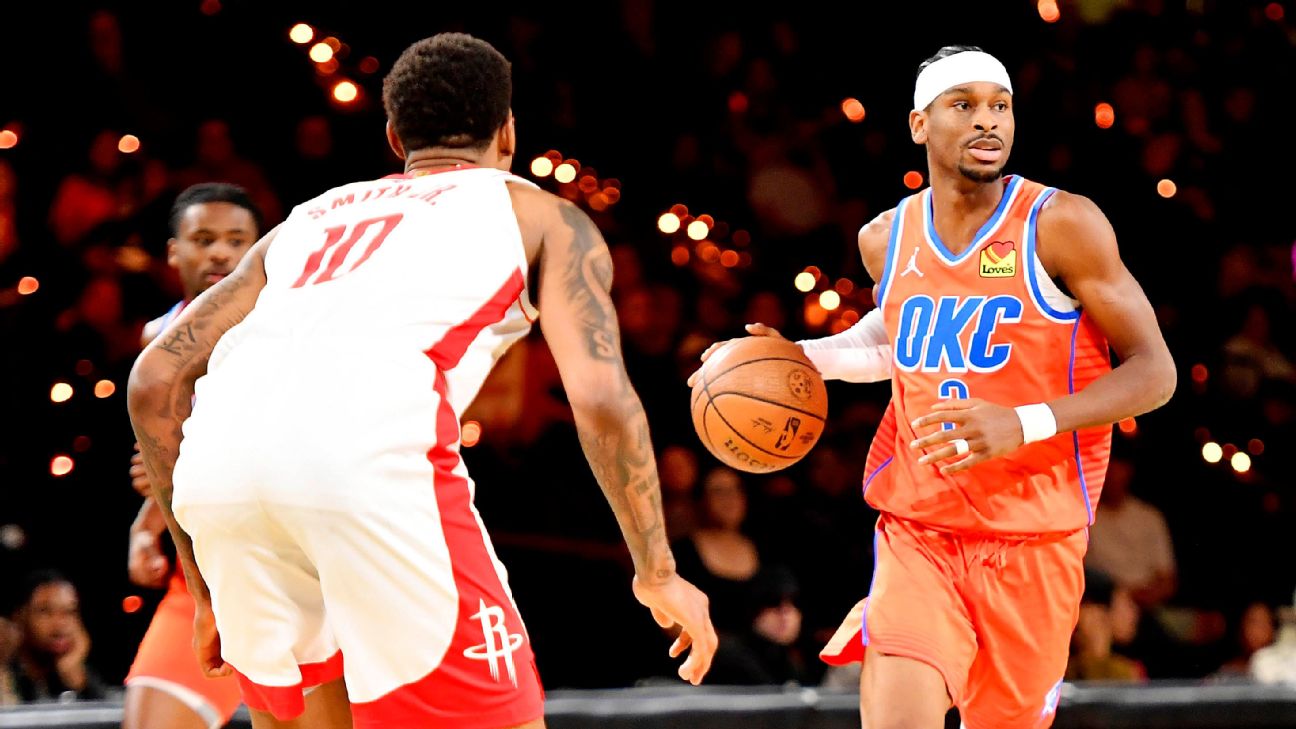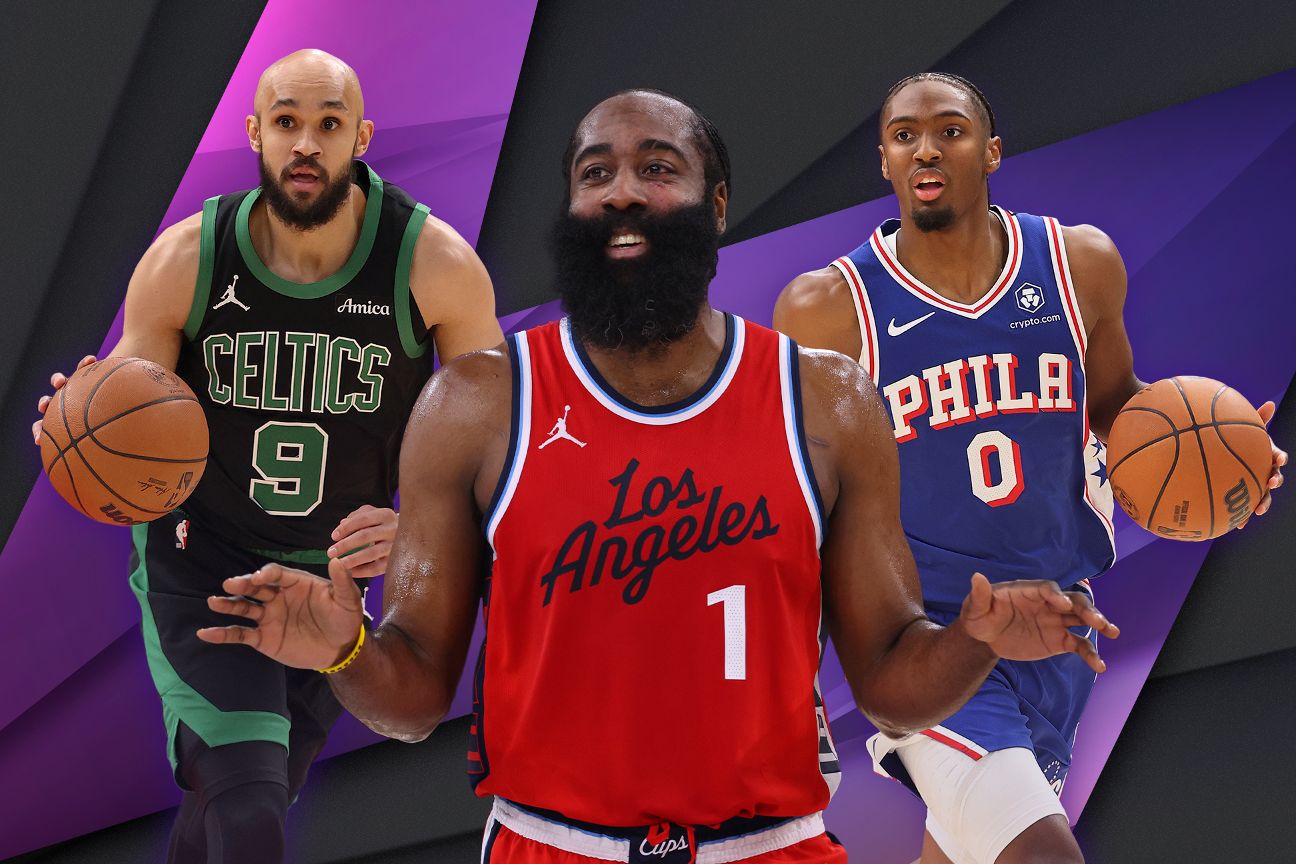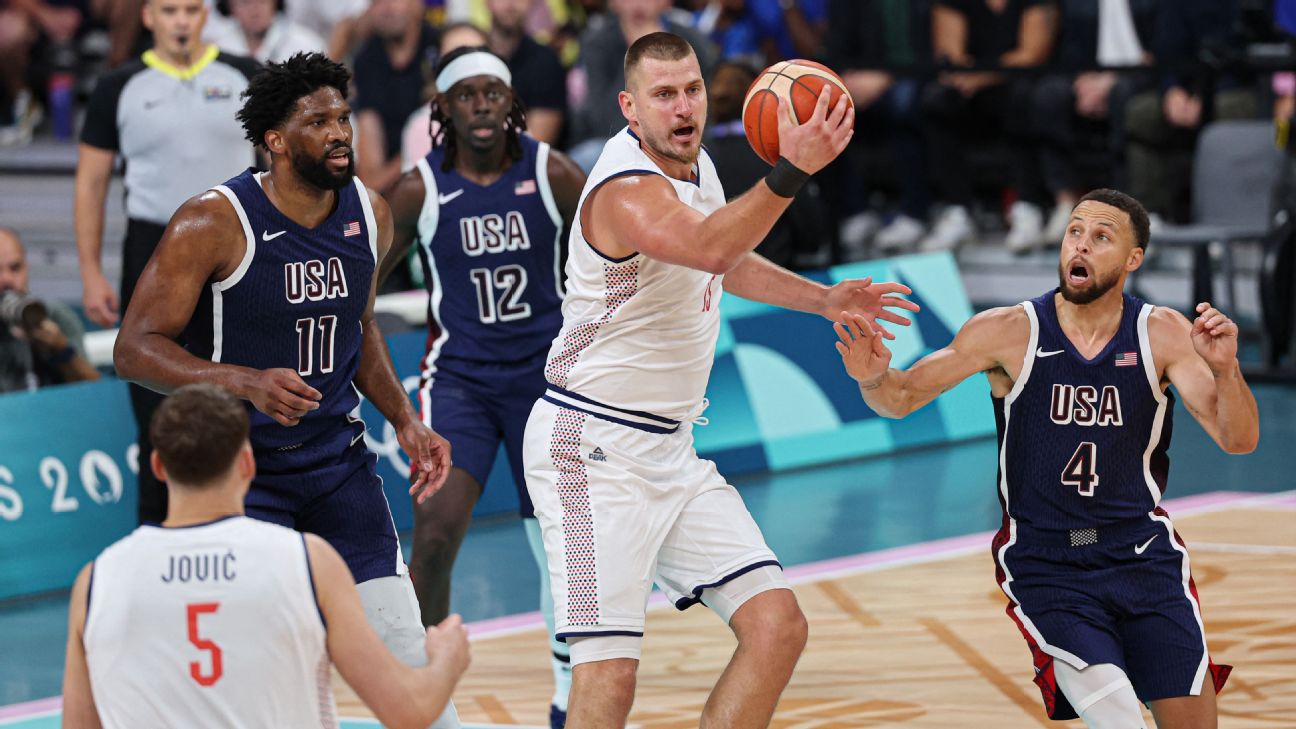Candice Ward-Imagn Images
NBA trade season begins Sunday, when 87% of players become eligible to be dealt.
With the majority of the contracts signed this summer becoming trade-eligible Dec. 15 — most others become eligible Jan. 15 — the first two weeks of December are the typical line of demarcation for teams to begin making calls to get a sense of the trade landscape.
With that in mind, our latest look around the league focuses on seven teams with massive roster decisions heading into the Feb. 6 trade deadline, including why a flurry of opposing scouts are showing up at New Orleans Pelicans games, the futures for trade targets Zach LaVine and Jimmy Butler and what league decision-makers are saying about LeBron James and the Los Angeles Lakers’ plans.
Jump to a team:
Lakers | Warriors | Pelicans
Heat | Hawks | Bulls | 76ers
in last summer’s Olympics and to figure out how the Golden State Warriors could put together an offer.
But simply, it’s just a game. James has repeatedly made two things clear both in public and behind the scenes: He wants to be a Laker, and the trades he wants involve the Lakers making roster upgrades around him. James had chances at last season’s trade deadline and during his unrestricted free agency to consider a move. There was no drama, as he quickly and repeatedly pledged to stay.
“The Lakers or any team who might want to trade for him don’t really have any say in the matter,” one league executive told ESPN. “He’s got a no-trade clause. Unless he goes in and tells [owner] Jeanie [Buss] he wants to leave, it’s not even a discussion.”
Bontemps: The Lakers remain armed with D’Angelo Russell’s $18.6 million expiring contract, plus several more minimum players on expiring deals, as well as their 2029 and 2031 first-round picks, but it’s going to be difficult for one trade to fix the myriad issues with the current roster. That has led to a belief among rival scouts and executives that the Lakers would love to find both a point guard and a big man to fill out their roster — though adding both, with the team’s limited assets, won’t be easy.
is in a vital time in his tenure with the Warriors. Over the past two weeks, coach Steve Kerr has put him in the starting lineup and boosted his minutes, touches and shots. Call it an earned opportunity or a classic showcase for other teams who might want a longer look, but Kuminga’s five highest shot totals this season have come in games since Thanksgiving. He’s also averaging more than 20 points in those games, though his efficiency hasn’t been his best.
Warriors owner Joe Lacob still has an affinity for Kuminga, league sources told ESPN, even as Kerr seems to run hot and cold with him. But a strong message came this fall when Kuminga and the team didn’t agree to a contract extension. The sides never got particularly close, sources said, which made it clear that Golden State’s belief in his future had its limits, at least for now.
If the Warriors do pull off a significant deal before the Feb. 6 trade deadline, it’s hard to see it not including Kuminga. But there’s also a hope that clarity will come during this opportunity currently being afforded to him.
Brian Windhorst explains why LeBron James’ actions suggest he wants to stay a Laker instead of going to the Warriors.
Bontemps: The Warriors and the Houston Rockets are the two teams with the best combination of young players and draft picks to acquire significant talent among the big market destinations around the league.
The Warriors would love to give Stephen Curry another deep playoff run. But general manager Mike Dunleavy Jr. has shown over the past 18 months since ascending to the position that he’s both pragmatic and focused on flexibility. His first move, jettisoning the Jordan Poole contract to the Washington Wizards in July 2023, was emblematic of that. So were his moves this past summer, when he turned Klay Thompson’s bloated expiring contract into three veterans in Kyle Anderson, Buddy Hield and De’Anthony Melton (although Melton is out for the season after ACL surgery).
Golden State is also building its young core in Brandin Podziemski, Trayce Jackson-Davis and Moses Moody, who was extended this offseason on a reasonable deal. That makes Kuminga’s lack of an extension all the more interesting.
, to move on from high-salaried players. As a result, there are only so many moves that can be expected to be made for players in that category over the next several weeks.
Several sources told ESPN in recent weeks they aren’t sure any players making more than the low $20 million range will be traded this season. That means there could be no guarantees of better deals coming along closer to the deadline if something appealing comes up sooner.
Bontemps: Any trade that the Heat do, involving Jimmy Butler or otherwise, is going to have one eye on the present and the other on the future — and specifically, their finances, sources said.
Miami, like just about every team, is focused on the new financial realities of life under the current collective bargaining agreement — in terms of both the repeater tax and the hefty price it will hit teams with, as well as the draconian team-building penalties that come with venturing north of the second luxury tax apron.
The Heat are into the tax for a second straight season — meaning they have to get out of the tax one of the next two years in order to avoid the much stiffer repeater tax penalties that will kick in as part of the CBA, which was designed to try to keep teams from being heavy spenders for a lengthy period of time without suffering consequences for doing so. And every team is hyperfocused on the ramifications of going into the second apron and the future impact it has on draft picks, in particular.
Throughout the tenure of Pat Riley and general manager Andy Elisburg in Miami, the Heat have valued flexibility. As they look at ways to potentially remake their roster in the coming months, expect that to be at the forefront of their minds — from both talent and financial perspectives.
Windhorst: A key factor in any discussion involving Butler is the $52 million player option in his contract for next season. When Butler and the Heat got nowhere on contract extension talks last spring, Butler’s camp made it clear his intention was to play out this season and become an unrestricted free agent next spring. That position has not changed, sources said.
But Butler doesn’t truly have to make that decision until June 29, and that gives him a layer of protection and control during what could be an active series of discussions around him between now and February. If the Heat elect to stay firm in their position from last summer and not extend Butler by the trade deadline, they open the risk of losing a franchise cornerstone for nothing in July.
Teams that might have interest in engaging the Heat to see what it might take to get Butler would need to get a feel of what Butler might be looking for in a new contract. Otherwise, they’d run the same risk as the Heat, and it could affect the package they’d be willing to offer. There’s also the possibility a team would be willing to look at Butler as a rental player, though that would affect the return the Heat could seek if they decided to trade him under those terms.
All of this makes a possible Butler trade tricky, to say the least. But his strong history of playoff performances and respect from fellow stars could well create a market for his services, and a possible Butler sweepstakes could define this trade season.
Bontemps: The Hawks are excited about their young quartet of players to build around: Dyson Daniels, Jalen Johnson, Onyeka Okongwu and the No. 1 pick in the 2024 NBA draft, Zaccharie Risacher.
But given where the Hawks are, once again in the play-in race, if teams begin calling about their veterans, sources said, Atlanta will listen. The Hawks are flirting with the luxury tax this season, but once Clint Capela’s expiring $22 million contract comes off the books after this season, there will be a lot more flexibility for Atlanta to play with to fill out its roster — in addition to clearing an unimpeded path for Okongwu into the starting five.
The one player opposing teams are curious about, specifically, is guard Bogdan Bogdanovic, who is a proven commodity as a scorer and shooter with a contract that, even within the current constraints, is movable at $17.6 million this year, $16.2 million next year and has a team option for the same amount the following season.
Windhorst: Late in the summer, after the Olympics, Hawks star point guard Trae Young flew Daniels and Risacher out to his offseason home in Oklahoma for a multiday training and bonding session, sources said. It was greatly appreciated by the young new teammates and formed the foundation for building a relationship with two cornerstones of the future in Atlanta.
Over the past two years it was an open secret the Hawks had some chemistry issues within the team, and it affected the working relationship between Young and Dejounte Murray, who was traded in the offseason to New Orleans for a package that included Daniels. Hawks officials have been working with Young — who can be a bit of an introvert, teammates have noticed over his career — on his leadership and relationship-building skills. It’s still a work in progress, but Young is becoming better at it, team sources said, and it’s been one of the many positives for the Hawks this season.
Young is leading the NBA in assists at 12.2 a game and has hit double figures in them in nine of his past 11 games, including Wednesday’s upset win in New York that got the surging Hawks to Las Vegas for Saturday’s NBA Cup semifinals.
Windhorst: Zach LaVine is having the best shooting season of his career, hitting 51% of his shots overall and 43% of his 3s. But despite this and even with more than a year on the trade block, there still hasn’t been any movement on a deal or any change of heart from LaVine and his desire to be moved from Chicago.
“Nothing has changed,” one source close to the situation deadpanned.
LaVine has $89 million on his contract for this season and next and then has a $49 million player option for 2026-27 — plus a history of knee injuries. The Bulls have found those factors have largely frozen the market on him. With all of the new layers of restrictions affecting team building, trading for a player with a $40-plus million annual salary is complicated at best for most teams. LaVine, regardless of his fine play and 22 points-per-game scoring average, is stuck in a holding pattern.
Bontemps: While he makes far less money than LaVine, it’s a similar story for Bulls center Nikola Vucevic, as sources across the league also don’t expect much interest in trading for him. Vucevic is actually having one of the best seasons of his career, averaging 21 points and 9.8 rebounds while shooting 58.7% from the field and 47.4% from 3. (Both shooting numbers would blow away his previous career highs.) That has also led to some reasonable skepticism that those high-water marks will hold up as the season progresses.
But that doesn’t change the fact that Vucevic struggles defensively and is owed another $20 million next year. Perhaps most importantly, there just isn’t much of a market for centers, one of the deepest positions in the league.
Bontemps: After their awful start, the 76ers have somewhat stabilized themselves with wins in four of their past five games — even if Joel Embiid’s status remains up in the air moving forward. But sources told ESPN that Philadelphia’s rough start hasn’t changed the expectation that the 76ers will be active — president of basketball operations Daryl Morey always is — in the weeks leading up to the trade deadline. The 76ers signed KJ Martin to a two-year, $16 million deal that was built to be moved, and they have several first-round picks to float in deals. They also have more than a few roster holes despite making a flurry of moves in the summer, most notably signing nine-time All-Star wing Paul George. For example, Philly could use more shooting (28th in 3-point field goal percentage) and frontcourt size, with minimum signing Guerschon Yabusele being the only true power forward on the roster. Windhorst: Trade season might technically start next week, but because of the rules around Martin’s contract, he can’t be traded until after Jan. 15. After the 76ers’ miserable start with Embiid and George dealing with knee issues, that extra month to find a possible trade partner using Martin’s contract should better clarify their needs going into February. Also, Kyle Lowry has the right to veto any trade as part of his contract, two things to keep in mind when looking at options to improve the 76ers’ postseason chances.



